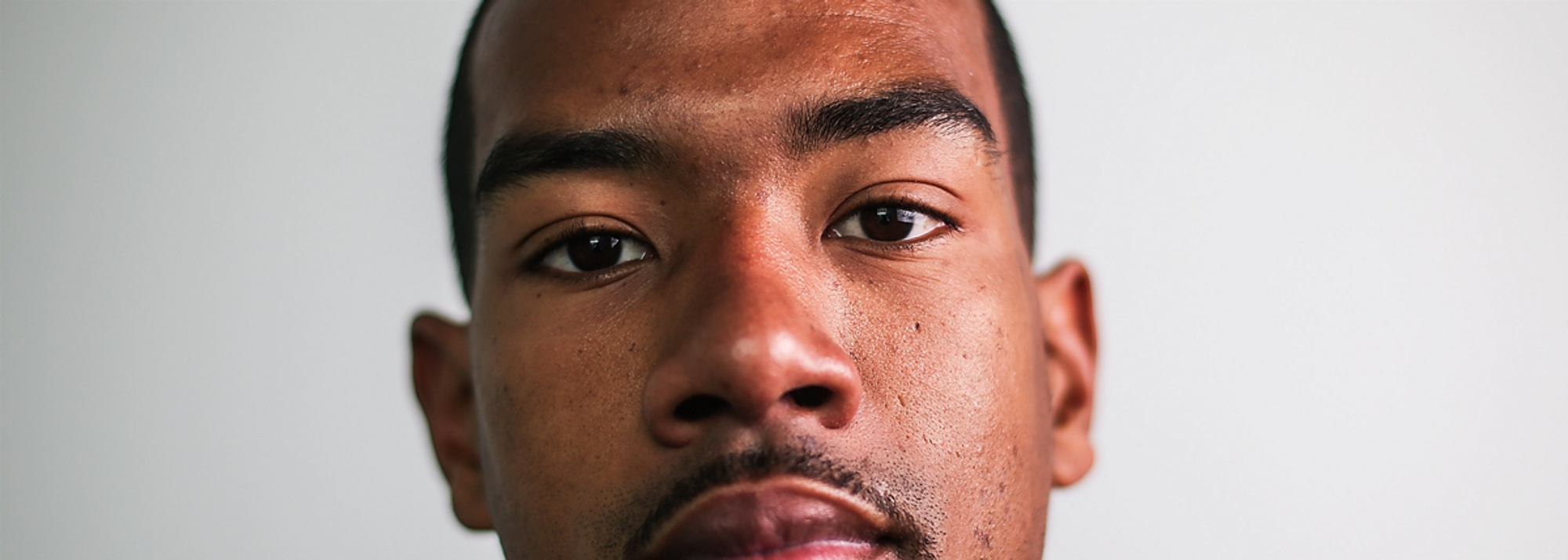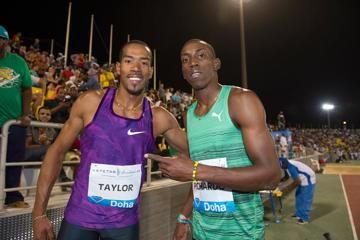US triple jumper Christian Taylor (© Getty Images)
Ever since his days as a high school athlete, Christian Taylor has been known as the triple jumper who is pretty good at some other events.
That, of course, is a gross understatement.
As a teenager, he won gold in the triple jump and bronze in the long jump at the 2007 IAAF World Youth Championships. The following year, he took gold in the 4x400m at the IAAF World Junior Championships. And in 2009, while still a junior, he clocked 45.34 in the 400m.
But Taylor is more than simply an insanely talented all-round athlete; he is a supreme competitor.
At the 2011 IAAF World Championships, he went from third to first place with one jump, improving his PB by 28 centimetres in the process to win gold with 17.96m. He went on to finish a close second at the 2012 IAAF World Indoor Championships but returned to the top of the podium later that year at the Olympic Games. It was his third global championships medal within the space of 12 months.
Disappointment came in 2013 as he finished just outside the medals at the IAAF World Championships in Moscow, but he established himself as the world’s top triple jumper again in 2014 by winning the Diamond Race.
“To win the Diamond Race last year, I needed to win in Glasgow and I did it on my last jump, then I needed to win in Zurich and I did it again on my last jump,” said Taylor. “It shows that heart, that competitive nature and that fire. And I have a lot of it still left.
“In Moscow I didn’t even get a medal; I finished fourth,” he added. “Maybe I was getting to that point where I wasn’t pushing myself the way I needed to. You can get complacent; you get to the top and believe that everyone will just bow down.
“But having the Moscow experience and then going to the World Relays last year, I got to find that fun again in the sport. I think I’ve now challenged myself to get back on the horse and be the best. I’m just so very grateful to be healthy and be doing the best I can.”
Another year, another change
Taylor is used to change. After winning the Olympic title in 2012, he moved from Florida to join his coach Rana Reider in the UK. Last year, he changed his lead-off leg to help ease the pressure in his knees. And last winter, Taylor once again moved to a new country to remain with his coach.
“At the end of November last year, my coach told me he had an opportunity at the Dutch federation,” explained Taylor, who moved to Amsterdam along with training partners Shara Proctor and Tiffany Porter.
“We work well together, so I follow him wherever he’s going. It was a little difficult because I was close to the other guys in the group who weren’t able to move, but you have to make the best of any situation.”
It was a big sacrifice, but Taylor knows that he and Reider have a winning formula. Reider coaches athletes across a range of events, from the jumps to the sprints to the hurdles, but his training is tailored to each athlete, no pun intended.
“He got to know me,” says Taylor. “It’s not a one-programme-fits-all approach. It has always been down to the details.
“He also focuses a lot on your outside life and makes sure it corresponds to what we’re trying to do on the track, making sure you get the proper recovery and nutrition.
“But outside of that, it’s also the friendship,” adds Taylor. “If I don’t want to talk about track, he says, ‘ok, cool’ and we’ll talk about something else.”
Year of the jumps
Taylor will be the first to admit that the triple jump – in terms of standards and excitement – had dipped over the past two years. The high jump, meanwhile, has been thriving with the world record being attempted at almost every IAAF Diamond League meeting.
So Taylor took it upon himself to do something about it.
“When it happened in the high jump, that’s when I started to believe maybe we could do it in the triple jump. I know all the attention is always going to be on the 100m and 200m, I know how the sport is, but when I saw the high jumpers getting the attention, I thought, ‘If they can do it, why can’t we?’
“So I spoke to Teddy (Tamgho, the world champion) and Benjamin (Compaore, the European champion) and said, ‘hey, why don’t we as a collective unit make this a premier event?’ Unfortunately Teddy went down with injury, but (Pedro Pablo) Pichardo has come up.”
Taylor’s showdown with Pichardo in Doha at the opening IAAF Diamond League meeting of 2015 was exactly what the triple jump needed.
For the first time in history, two men jumped beyond 18 metres in the same competition. Pichardo won with 18.06m and Taylor responded with a personal best of 18.04m; again, in the final round.
“I was in complete shock,” said Taylor of his performance. “I couldn’t sleep and became super sensitive. I took about two or three days off, got back to jumping and then everything was back to normal again.”
Pichardo went on to improve to 18.08m in Havana, while Taylor has notched up victories in Ostrava and Birmingham in recent weeks. Everywhere they go, they are asked about breaking the world record.
“It’s definitely far,” says Taylor, referring to the 18.29m set by Jonathan Edwards in 1995. “Once I got the taste of jumping 18 metres, I said, ‘I can do it’. I really believe I can do it. I struggle when I don’t have someone to push me in competitions; I am a fighter and I enjoy the back-and-forth.
“We still have two-and-a-half months until Beijing so there’s time for more people to come up,” he added. “We need to bring up the level of the triple jump. We need to make it the year of the jumps.”
Getting back on top
Taylor hasn’t competed against Pichardo since their Doha clash, but they will face each other again at the IAAF Diamond League meeting in Lausanne and then, of course, at the IAAF World Championships, Beijing 2015.
After the disappointment of Moscow two years ago, Taylor has one goal in mind.
“Pichardo is showing that he is very fit and is jumping very well, so I’ve got to do my part and stay up with him,” he said. “So my eye is on Pichardo, for sure, but my eye is mostly on that gold medal.”
Unusually, the qualifying and final for the triple jump in Beijing will be held on successive days. But Taylor doesn’t mind and thinks it may work in his favour.
“Normally you have a day in between, but having them on back-to-back days means you’ll be able to ride that high a little bit more and keep the fire burning,” he says. “I like to go and jump well and make a statement in the qualifying round. If I do that, I don’t know if I’ll be able to sleep that night.
“Gold would mean the world to me,” he added. “It’s been too many years since I’ve been on the podium. It’s a new chapter, it’s a new leg. I’ve jumped the distances but now it’s doing it when it counts.”
Knowing Taylor, that will probably be in the last round.
Jon Mulkeen for the IAAF







